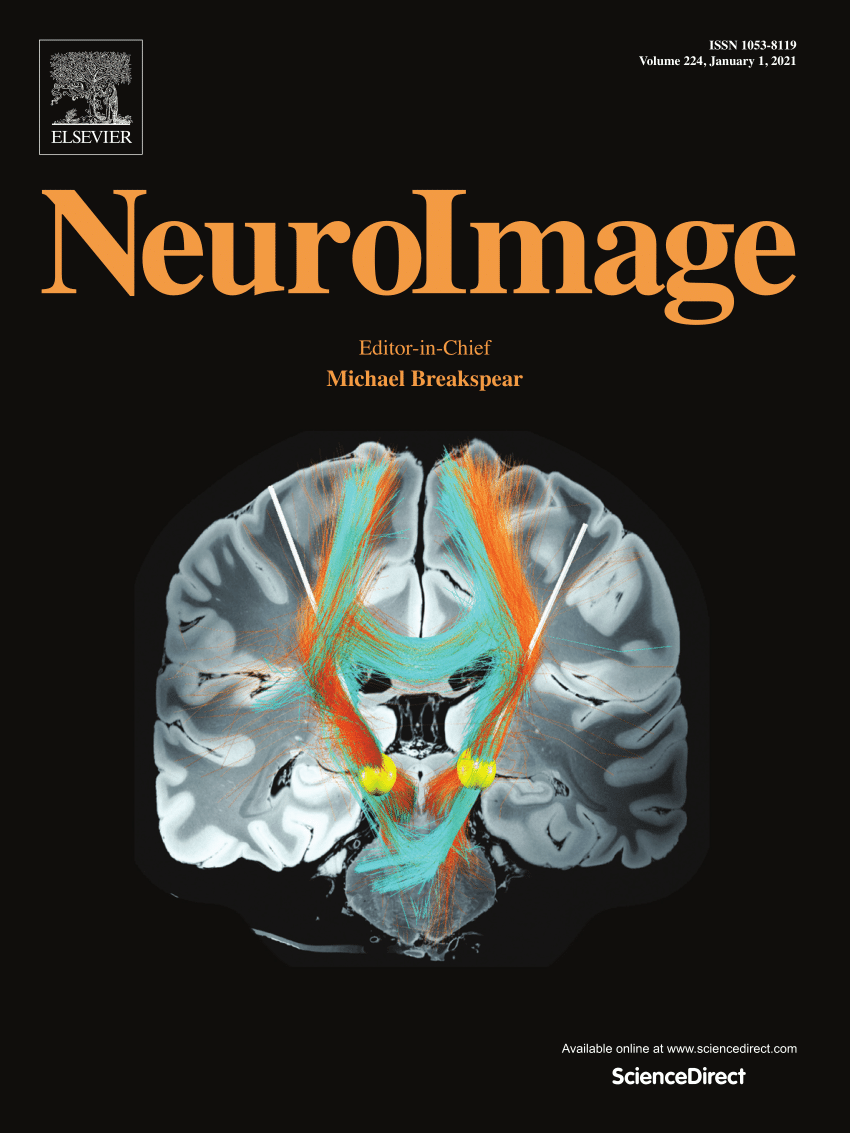The cortical architecture representing the linguistic hierarchy of the conversational speech
IF 4.7
2区 医学
Q1 NEUROIMAGING
引用次数: 0
Abstract
Recent studies demonstrate that the brain parses natural language into smaller units represented in lower-order regions and larger units in higher-order regions. Most of these studies, however, have been conducted on unidirectional narrative speech, leaving the linguistic hierarchy and its cortical representation in bidirectional conversational speech unexplored. To address this gap, we simultaneously measured brain activity from two individuals using functional near-infrared spectroscopy (fNIRS) hyperscanning while they engaged in a naturalistic conversation. Using a Pre-trained Language Model (PLM) and Representational Similarity Analysis (RSA), we demonstrated that conversational speech, jointly produced by two interlocutors in a turn-taking manner, exhibits a linguistic hierarchy, characterized by a boundary effect between linguistic units and an incremental context effect. Furthermore, a gradient pattern of shared cortical representation of the linguistic hierarchy was identified at the dyadic rather than the individual level. Interpersonal neural synchronization (INS) in the left superior temporal cortex was associated with turn representation, whereas INS in the medial prefrontal cortex was linked to topic representation. These findings further validated the distinctiveness of linguistic units of different sizes. Together, our results provide original evidence for the linguistic hierarchy and the underlying cortical architecture during a naturalistic conversation, extending the hierarchical nature of natural language from unidirectional narrative speech to bidirectional conversational speech.
代表会话言语的语言层次的皮层结构
最近的研究表明,大脑将自然语言解析成在低阶区域表示的小单位和在高阶区域表示的大单位。然而,这些研究大多是在单向叙述性言语中进行的,没有对双向会话言语中的语言层次及其皮层表征进行探索。为了解决这一差距,我们同时使用功能性近红外光谱(fNIRS)超扫描测量了两个人在进行自然对话时的大脑活动。使用预训练语言模型(PLM)和表征相似性分析(RSA),我们证明了由两个对话者轮流共同产生的会话语音表现出语言层次,其特征是语言单位之间的边界效应和增量语境效应。此外,语言层次的共同皮层表征的梯度模式是在二元而不是个体水平上确定的。左侧颞上皮层的人际神经同步(INS)与回合表征有关,而内侧前额叶皮层的人际神经同步(INS)与主题表征有关。这些发现进一步验证了不同大小的语言单位的独特性。总之,我们的研究结果为自然对话中的语言层次和底层皮层结构提供了原始证据,将自然语言的层次性质从单向叙事语言扩展到双向会话语言。
本文章由计算机程序翻译,如有差异,请以英文原文为准。
求助全文
约1分钟内获得全文
求助全文
来源期刊

NeuroImage
医学-核医学
CiteScore
11.30
自引率
10.50%
发文量
809
审稿时长
63 days
期刊介绍:
NeuroImage, a Journal of Brain Function provides a vehicle for communicating important advances in acquiring, analyzing, and modelling neuroimaging data and in applying these techniques to the study of structure-function and brain-behavior relationships. Though the emphasis is on the macroscopic level of human brain organization, meso-and microscopic neuroimaging across all species will be considered if informative for understanding the aforementioned relationships.
 求助内容:
求助内容: 应助结果提醒方式:
应助结果提醒方式:


